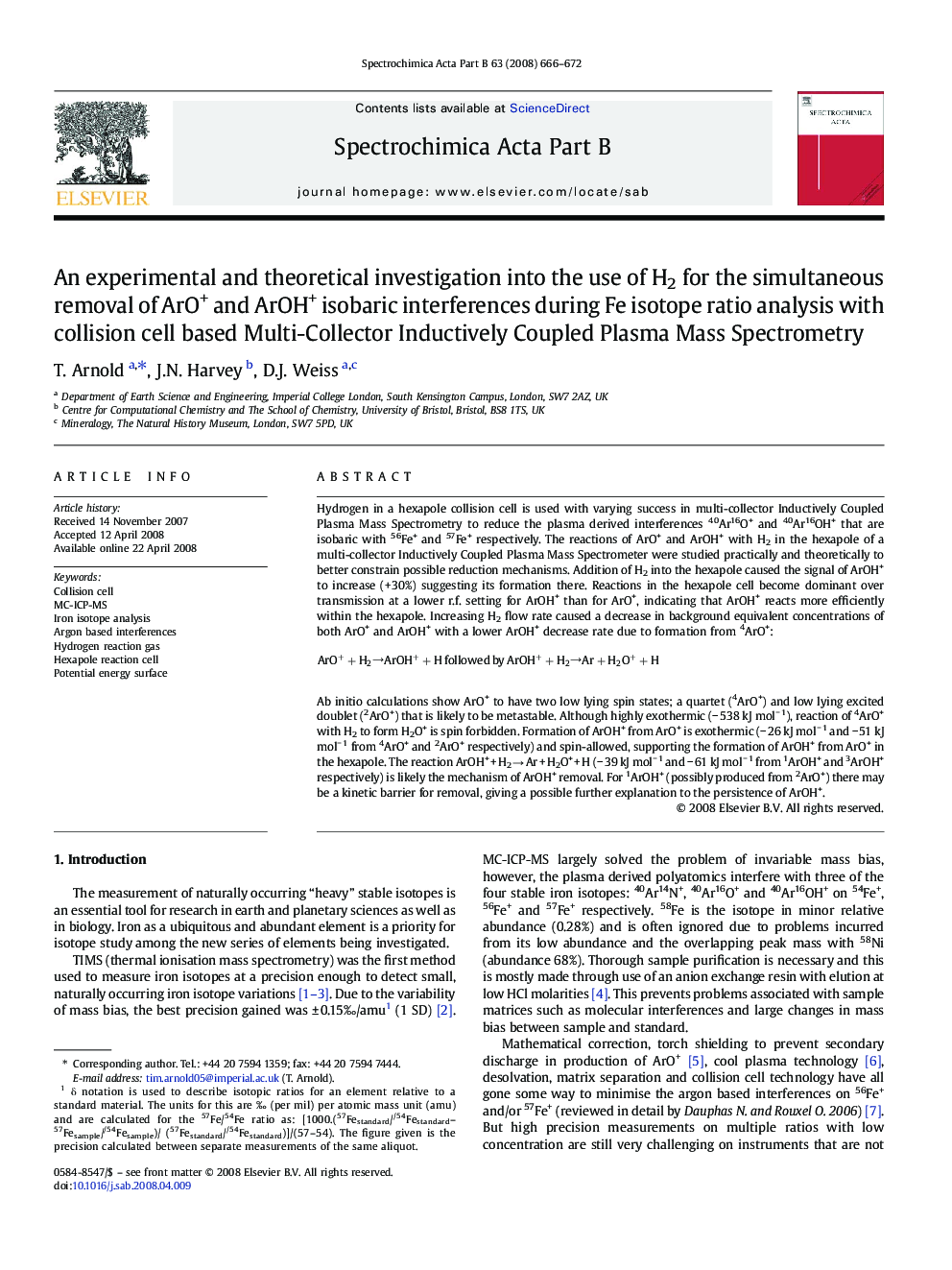| Article ID | Journal | Published Year | Pages | File Type |
|---|---|---|---|---|
| 1240496 | Spectrochimica Acta Part B: Atomic Spectroscopy | 2008 | 7 Pages |
Hydrogen in a hexapole collision cell is used with varying success in multi-collector Inductively Coupled Plasma Mass Spectrometry to reduce the plasma derived interferences 40Ar16O+ and 40Ar16OH+ that are isobaric with 56Fe+ and 57Fe+ respectively. The reactions of ArO+ and ArOH+ with H2 in the hexapole of a multi-collector Inductively Coupled Plasma Mass Spectrometer were studied practically and theoretically to better constrain possible reduction mechanisms. Addition of H2 into the hexapole caused the signal of ArOH+ to increase (+ 30%) suggesting its formation there. Reactions in the hexapole cell become dominant over transmission at a lower r.f. setting for ArOH+ than for ArO+, indicating that ArOH+ reacts more efficiently within the hexapole. Increasing H2 flow rate caused a decrease in background equivalent concentrations of both ArO+ and ArOH+ with a lower ArOH+ decrease rate due to formation from 4ArO+:ArO++H2→ArOH++HfollowedbyArOH++H2→Ar+H2O++HAb initio calculations show ArO+ to have two low lying spin states; a quartet (4ArO+) and low lying excited doublet (2ArO+) that is likely to be metastable. Although highly exothermic (− 538 kJ mol− 1), reaction of 4ArO+ with H2 to form H2O+ is spin forbidden. Formation of ArOH+ from ArO+ is exothermic (− 26 kJ mol− 1 and − 51 kJ mol− 1 from 4ArO+ and 2ArO+ respectively) and spin-allowed, supporting the formation of ArOH+ from ArO+ in the hexapole. The reaction ArOH+ + H2 → Ar + H2O+ + H (− 39 kJ mol− 1 and − 61 kJ mol− 1 from 1ArOH+ and 3ArOH+ respectively) is likely the mechanism of ArOH+ removal. For 1ArOH+ (possibly produced from 2ArO+) there may be a kinetic barrier for removal, giving a possible further explanation to the persistence of ArOH+.
